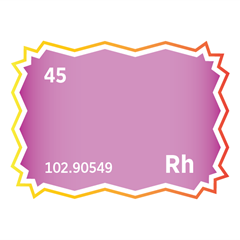PGM recycling
Vertical integration and lower margins
Spent autocatalyst recycling operates on an international scale. The autocatalyst recycling industry has changed measurably over the last decade, having undergone a period of aggressive global expansion. Some refineries have expanded their presence in the recycling market, integrating up the value chain, whilst an increased realisation of the contained value of catalytic converters since metal prices spiked in the past has meant that operating margins have narrowed along the value chain and existing players have had to adapt, innovate and integrate to survive. PGM recycling volumes consider vehicle production, sales, trade, age distribution, collector locations and vehicle parc, and an understanding of historical, regional catalyst introduction and associated changes in loadings. Our analysis has enabled us to define, by region, the existing and potential future volumes of platinum, palladium and rhodium for recycling and recovery.

Major recyclers are located in the US and Western Europe. The US is the most established market in recycling spent autocatalysts due to a longer history of emissions legislation (1970s) and PGM loadings on catalytic converters (1975). The USA has the highest number of vehicles on the road (parc) and therefore has the most scrapped vehicles per year, leading to the greatest volume of spent autocatalysts available to recyclers. Not surprisingly, therefore, most recyclers are headquartered or based in the USA. The steel price also has an influence on the number of cars being scrapped the influencing the number of autocatalysts recycled.
Crushed autocatalyst monoliths
Used spark plugs
Recovered oxygen sensors




How can we help you?
SFA (Oxford) provides bespoke, independent intelligence on the strategic metal markets, specifically tailored to your needs. To find out more about what we can offer you, please contact us.





